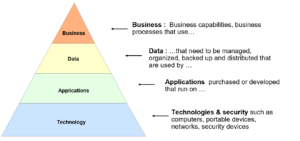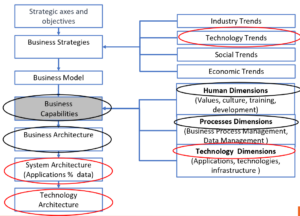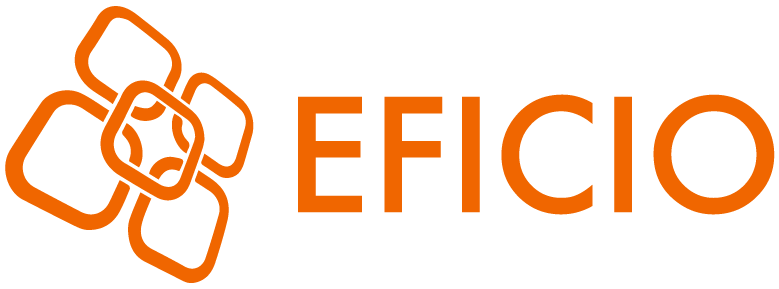
Enterprise Architecture
Is it possible to transform your organization into an agile enterprise where business and IT are aligned? Yes! with the right objectives and plans in place. However, you cannot change what you cannot see.
To achieve this, the business and IT must truly communicate with each other. They must use a common language to describe the business, how it is designed, and how it should operate and be supported.
The following diagram presents the layers of enterprise architecture:

Both enterprise architecture and business process management improve the alignment between business objectives and IT.
1. Business architecture and processes
Business process architecture provides a framework for communication between operations and technologies to discuss and plan objectives, strategies, business capabilities, and required information. It establishes a link between the business’s goals and strategies and the processes and services provided by technology and the rules that support operations. Business capability modeling plays a major role in enterprise architecture. (See our article “Business Capabilities: A Powerful Tool for Your Strategic Planning“.)
2. Data Architecture
Data is the lifeline of an organization. Successful data management requires much more than technological investments – it also demands the establishment of processes and people to manage all aspects of the data lifecycle.
Data architecture defines how data is collected, stored, secured, and processed to support business processes. Your on-demand CIO can help you manage the entire data lifecycle to enable better decision-making, reduce risks, improve security, and enhance productivity and operational efficiency.
3. Application Architecture
When market requirements change rapidly, a gap is created between business needs and IT infrastructure. An application architecture is necessary to maintain a competitive advantage and agility in a competitive environment. Understanding your own application architecture is a prerequisite for retaining agility. A consistent application architecture will quickly identify the technical needs of the organization and the available capabilities to support them, allowing for better cost forecasting for integration and support.
Your on-demand CIO can provide strategic guidance to the application integration team by having a comprehensive understanding of all applications from the following perspectives:
- Interoperability capability
- Links between applications, business processes, datasets, and underlying technology
- Performance and scalability
- Reliability and availability
- Application lifecycle stage
- Technological risks
4. Technology Architecture
Simplifying technological diversity enables agility for your business. The technological architecture consists of components such as database management, security, servers, network, etc.
The following diagram demonstrates that business capabilities are at the intersection between the company’s strategic plan and enterprise architecture.

Your on-demand CIO can assist you with the following topics:
- Development of the current technological architecture and associated diagnostic.
- Creation of technology strategies and plans.
- Service-oriented architecture and infrastructure solutions.
- Identification of innovative technologies that can generate competitive advantages.
- Training, workshops, and technology briefings.
- Service-oriented business solutions.
With simplified operations and an aligned environment of applications, data, and technologies, organizations can benefit from:
- Improved business returns and efficiency
- Reduction in infrastructure operating costs
- Better compliance with regulations
For an enterprise architecture applied to the smart factory (Industry 4.0), we suggest reading our white paper here: “Towards the Factory of the Future.” (In French)
Subscribe to the Eficio newsletter and be the first to receive our updates!

